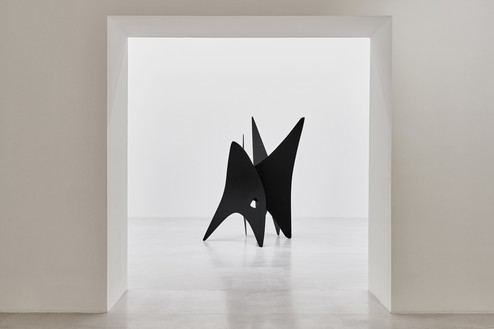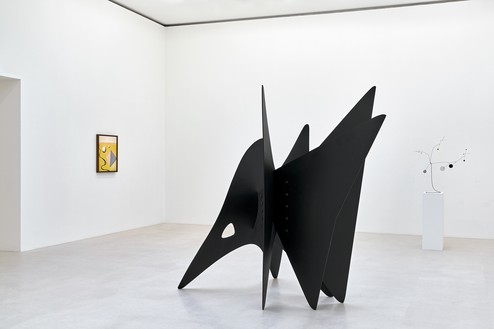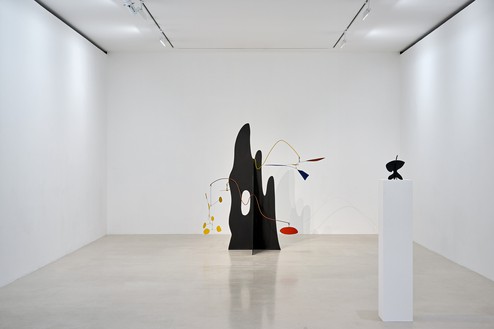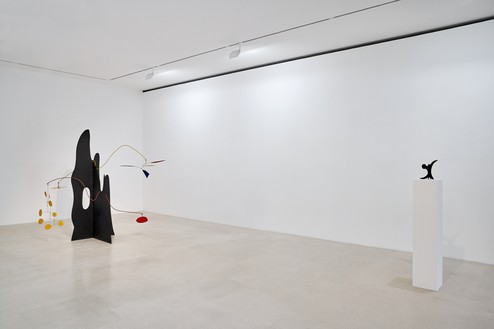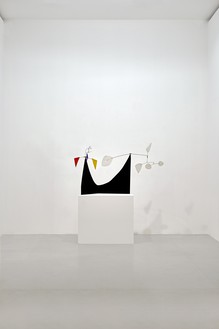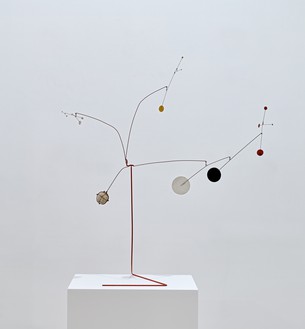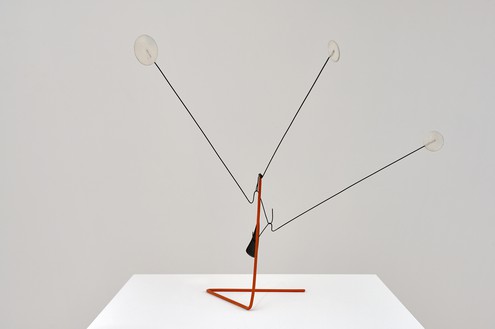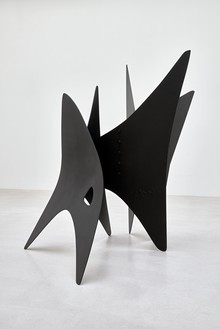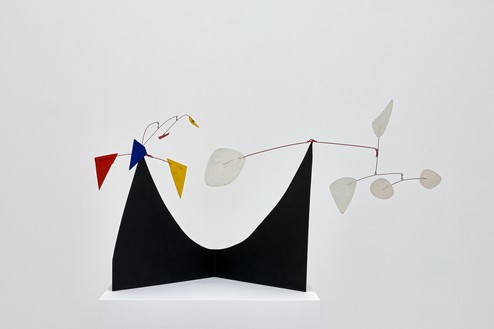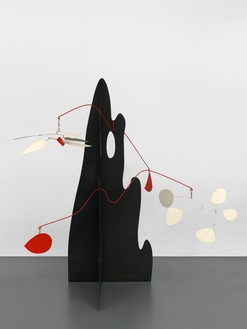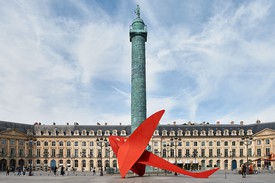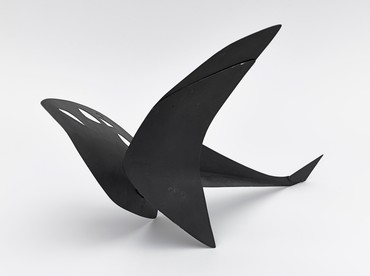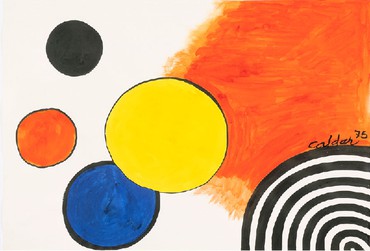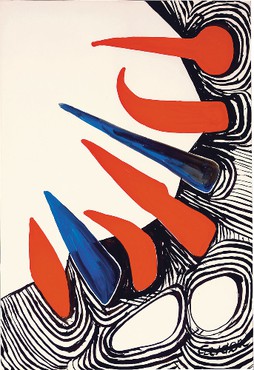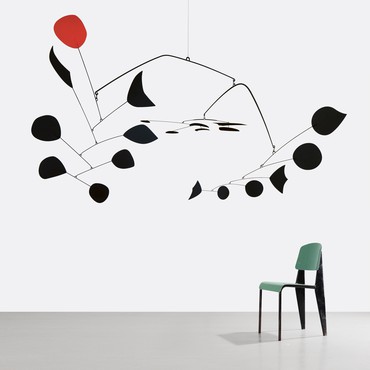About
Gagosian is pleased to present a selection of sculptures and paintings by Alexander Calder at the rue de Ponthieu gallery. The exhibition complements both the public installation of Calder’s monumental sculpture Flying Dragon (1975) at Place Vendôme as part of FIAC Hors les Murs and Calder: 1975 and “Flying Dragon,” the inaugural presentation at the gallery’s new location at 9 rue de Castiglione, which gathers the sculpture’s original maquette and related archival materials alongside additional works from 1975.
At the rue de Ponthieu gallery, selected works by Calder emphasize his inimitable visual language and stress the interplay between nature and abstraction, stillness and motion, and monumentality and ephemerality in his practice. Standing mobiles such as Caged Stone and Fourteen Dots (c. 1948), Three White Dots on Orange Stalk (1952), and Double Headed (1973) represent a bridge between the static sculptures of Calder’s early production and the later free-hanging mobiles for which he became so widely known. The term mobile was coined by Marcel Duchamp in 1931 to describe Calder’s kinetic abstract objects, while stabile was suggested by Jean Arp as a designation for Calder’s stationary works.
The exhibition also features entries from Calder’s Crags series of 1974. In Crag with White Flower and White Discs (1974), his decades-long investigation of kinetic and fixed components culminates in a dynamic synthesis of painterly and sculptural idioms. Originally made for the exhibition Crags and Critters of 1974 at Perls Galleries, New York, the sculpture embodies Calder’s singular employment of color and shape in a silhouette-like form surrounded by suspended elements that float in energetic and unpredictable ways.
Also on view are the stabile Triangles (1957), the mobile Black Circle, Black Triangle (1961), and several gouache paintings whose exploration of abstract and natural motifs in bold colors transcribe the vocabulary of Calder’s sculpture into a more immediate medium.
#AlexanderCalder
Behind the Art
Alexander Calder: Flying Dragon
In this video, Gagosian director Serena Cattaneo Adorno celebrates the installation of Alexander Calder’s monumental sculpture Flying Dragon (1975) at Place Vendôme in Paris, detailing the process and importance of this ambitious project.
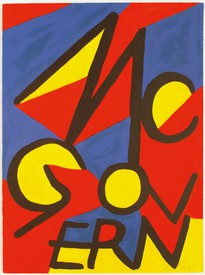
The Art History of Presidential Campaign Posters
Against the backdrop of the 2020 US presidential election, historian Hal Wert takes us through the artistic and political evolution of American campaign posters, from their origin in 1844 to the present. In an interview with Quarterly editor Gillian Jakab, Wert highlights an array of landmark posters and the artists who made them.

An Alphabetical Guide to Calder and Dance
Jed Perl takes a look at Alexander Calder’s lifelong fascination with dance and its relationship to his reimagining of sculpture.
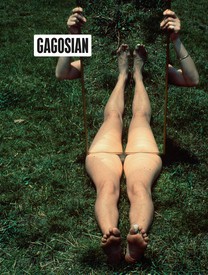
Now available
Gagosian Quarterly Summer 2020
The Summer 2020 issue of Gagosian Quarterly is now available, featuring Joan Jonas’s Mirror Piece 1 (1969) on its cover.

The New World of Charlotte Perriand
Inspired by a visit to the Fondation Louis Vuitton’s exhibition Charlotte Perriand: Inventing a New World, William Middleton explores the life of this modernist pioneer and her impact on the worlds of design, art, and architecture.
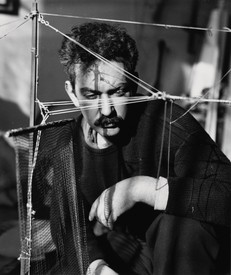
Calder: Sculpting A Life
The first authorized biography of Alexander Calder was published this past fall. Biographer Jed Perl and Alexander “Sandy” S. C. Rower, president of the Calder Foundation, discuss the genesis of the book, the nature of genius, and preview what’s to come in the second volume with the Quarterly’s Wyatt Allgeier.


